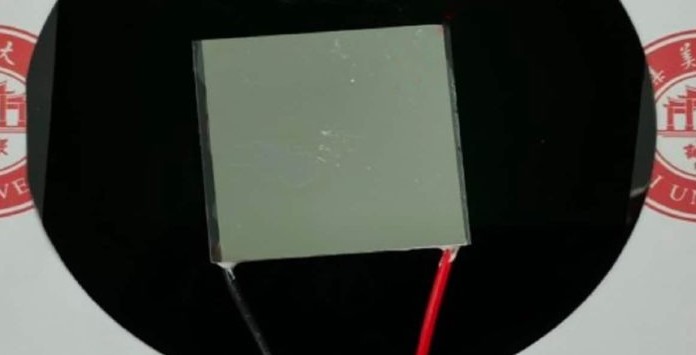
A new thermoelectric generator (TEG – Thermo-Electric Generator) makes it possible to continuously produce electricity using the sun’s heat and a radiant element that releases heat into the air.
TEG can produce electricity during the day and at night
Self-powered, this new thermoelectric generator can operate day or night or even in cloudy conditions, thus becoming a reliable source of power for small electronic devices, such as external sensors.
Thus it will be a continuous and sustainable power solution for small devices, ending some of the limitations of traditional power sources, such as batteries.
Heat generators are solid devices that use temperature differences to generate electricity without moving parts. Liu and his team of researchers showed that the new TEG can generate heat and cold at the same time, which is necessary to create a temperature difference capable of generating electricity, even in cloudy conditions. This negative energy source is made up of ingredients that are easily produced.
Improving the performance of thermoelectric generators
The production of electric current results from the change in temperature, as electrons move from the hot part to the cold part. This is the principle of thermoelectric generators, but there are some unstable temperature differences and they end up not generating enough electricity to be useful.
To address this limitation and thus improve TEG performance, the researchers developed a novel thermogenerator.

They used a component called Ultra Broadband Solar Absorber (UBSA – Ultrafast solar absorber) which captures the light and heats one side of the generator, while at the same time, another component called a Planar Radiation Cooling Emitter (RCE) cools the other side, thus releasing heat.
Both UBSA and RCE can be applied under a flexible substrate, which can be useful for mobile devices.
During the night or on cloudy days, the temperature difference is greatly reduced due to the lack of direct sunlight. But there is still a temperature difference capable of producing electricity, albeit at less-than-optimal efficiency.
Produce electricity overnight using a thermoelectric generator
The researchers decided to conduct the tests outdoors and under different weather conditions. They continued to monitor the output voltage of the device and proved that electricity can be generated continuously during the day, night and cloudy conditions.
Of course during the day the device reached its peak voltage of 166.2mV, which is enough to power a sensor or small device. During the night with clear skies and also in cloudy conditions, it generates 14.7 mV and 95 mV, respectively.
The researchers are working to improve the thermoelectric device’s efficiency, robustness, and scalability, with the goal of long-term testing under various conditions.
Another goal is to explore the potential of mass production at reasonable costs and thus be able to apply it in remote or underdeveloped areas where there are no traditional energy sources.
What is a thermogenerator and how does it work?

